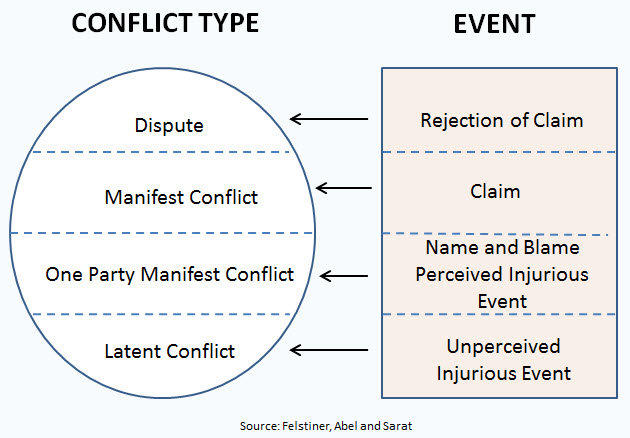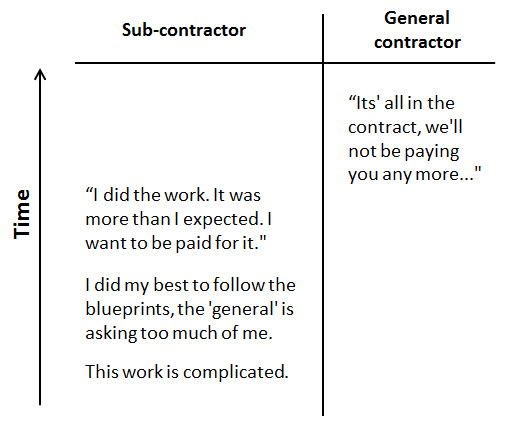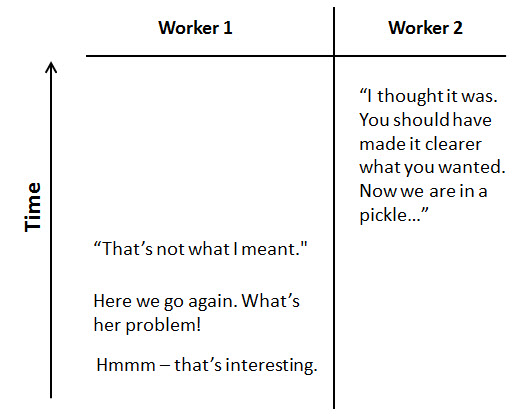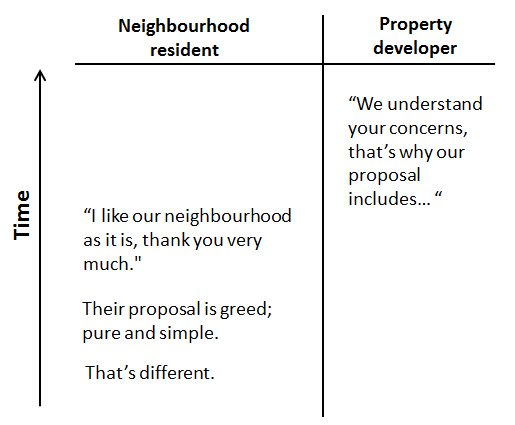It’s crazy how something that’s a minor annoyance to us can mushroom into a full-blown dispute.
Apart from my own mushrooms, I see this all the time, as a mediator.
One party has a gut feeling that somethings not quite right. Before the dust has settled on that feeling, its magnified into something bigger. They name and blame someone for their negative feeling, and they’ve called them out on it. When the other party has a different take on things, a formal ‘dispute’ can follow.
Conflict starts small and then it grows
A helpful framework for understanding how conflict grows, below, is from Felstiner, Abel and Sarat’s work on the emergence and transformation of disputes:
In the initial stages, conflict is below the surface; i.e., resides within one party. When it’s brought to light, Conflict Manifest, it can lead to open recognition that the parties differences, and potentially, the “see you in court” response.
Examples
Here are some examples of how conflict starts small, and grows. I’ve drawn these from actual client situations that I’ve mediated.
Example 1: Business dispute
A sub-contractor was hired by a general contractor to install electrical services in a new building. As the work progresses:
Example 2: Workplace conflict
Long-standing interpersonal differences between co-workers surface, leading to another communication breakdown, and workplace productivity grinding to a halt:
Example 3: Community dispute
A developer is proposing to re-develop a property in the neighbourhood:
Three ways to limit conflict growth
These strategies can be applied independently. They also work well, together:
- Increase self-awareness. Before slamming the other party, consider your response to conflict. Are you being triggered by one of your ‘hot buttons’? Is your response behaviour constructive or destructive? Make conflict competency your advantage.
- Build your capacity to dialogue. Initiating and facilitating difficult conversations, with those we are conflicted with, is no easy task. Getting better at this skill will help you respectfully, and capably, surface conflict (a good thing) instead of, once again, sweeping conflict under the table (not a good thing).
- Call in a 3rd party to assist. A skilled 3rd party, whether a manager from another department, an external coach or mediator,… can help the individual(s) understand issues, why they find them important, and how they can effectively manage the conflict, going forwards.
——————————
[Collaborative Journeys provides conflict management services for small to medium-sized businesses, nonprofits and local governments. Contact Ben for a free consultation.]





Speak Your Mind